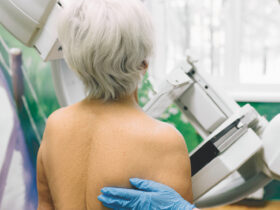By Dennis O. Sagini, MD
Hand infections represent one of the most serious conditions affecting the upper extremity, requiring immediate medical attention to prevent permanent disability. As an orthopedic surgeon specializing in hand and upper extremity surgery, I frequently encounter patients who underestimate the severity of hand infections, often leading to complications that could have been prevented with early intervention.
Common Types of Hand Infections
Hand infections can manifest in various forms, each requiring specific treatment approaches. Cellulitis, the most common superficial infection, affects the skin and subcutaneous tissue, typically presenting with redness, warmth, and swelling. Deep space infections, however, are far more concerning as they involve the fascial compartments within the hand, potentially causing severe functional impairment.
Paronychia, an infection around the nail fold, is frequently seen in patients who bite their nails or have poor nail hygiene. While seemingly minor, untreated paronychia can progress to involve deeper structures. Felon infections affect the fingertip pulp and can cause significant pain and swelling. These infections are particularly dangerous because the tight fascial compartments in the fingertip can lead to tissue necrosis if pressure is not relieved promptly.
Causes and Risk Factors
Most hand infections result from bacterial contamination through breaks in the skin. Common causative organisms include Staphylococcus aureus and Streptococcus species. Penetrating injuries, such as puncture wounds from thorns, needles, or animal bites, create direct pathways for bacterial invasion. Human bites, often occurring during altercations, are particularly concerning due to the high bacterial load in human saliva.
Certain populations face increased infection risks. Diabetic patients experience impaired wound healing and compromised immune responses, making them more susceptible to severe infections. Immunocompromised individuals, including those receiving chemotherapy or long-term steroid therapy, require heightened vigilance for signs of infection.
Recognition and Early Warning Signs
Early recognition of hand infections is crucial for successful treatment. Patients should seek immediate medical attention if they experience progressive swelling, increasing pain, red streaking up the arm, fever, or inability to move fingers normally. The classic signs of infection – redness, warmth, swelling, and pain – may be subtle initially but typically worsen rapidly.
One particularly concerning sign is the loss of normal finger cascade, where fingers no longer curl naturally when the hand is relaxed. This may indicate deep space infection or tendon involvement, requiring urgent surgical intervention.
Treatment Approaches
Treatment depends on the infection’s severity and location. Early cellulitis may respond to oral antibiotics and elevation, while deep space infections typically require surgical drainage. As a specialist in hand surgery, I emphasize that timely surgical intervention can mean the difference between full recovery and permanent disability.
Surgical drainage involves making precise incisions to access infected spaces while preserving vital structures like tendons, nerves, and blood vessels. Post-operative care includes aggressive hand therapy to prevent stiffness and maintain function.
Prevention and Long-term Outcomes
Prevention remains the best strategy. Proper wound care, including thorough cleaning and appropriate dressing of cuts and scrapes, significantly reduces infection risk. Patients should avoid biting nails and maintain good hand hygiene.
With prompt recognition and appropriate treatment, most hand infections heal completely without long-term consequences. However, delayed treatment can result in permanent stiffness, chronic pain, or even amputation in severe cases. This underscores the importance of seeking immediate medical attention for any concerning hand symptoms.
If you suspect a hand infection or are experiencing any of the warning signs mentioned above, don’t wait. Early intervention is critical for preserving hand function and preventing complications. Contact our office immediately at 239-302-3216 to schedule an urgent evaluation and begin appropriate treatment.
Dennis O. Sagini, MD
Dr. Sagini is an orthopedic surgeon with specialization in hand and upper extremity surgery. He specializes in arthritis of the hand, nerve compression, muscle and tendon injury, fracture care, and upper extremity dysfunction.
He completed his Bachelors of Science in Microbiology from the University of Oklahoma in Norman, Oklahoma in 1998 and his Doctor of Medicine at Temple University in Philadelphia, PA in 2002. It was during medical school training that Dr. Sagini developed an interest in orthopaedic surgery. His residency in orthopaedic surgery was completed at Howard University Hospital, Washington, DC. Dr. Sagini completed his fellowship training in Hand and Upper Extremity surgery at the University of Pittsburgh Medical Center in Pittsburgh, PA.
Dr. Sagini is a member of the Lee County Medical Society as well as a Board-Certified Diplomate of the American Board of Orthopedic Surgeons.
Dr. Sagini is active in research and community service and has a passion for overseas medical mission work. He also enjoys running, traveling, listening to music, cooking, tennis, and spending time with his family and friends.
239-302-3216 | saginimd.com
13691 Metro Pkwy, Suite 400
Fort Myers, FL 33912









